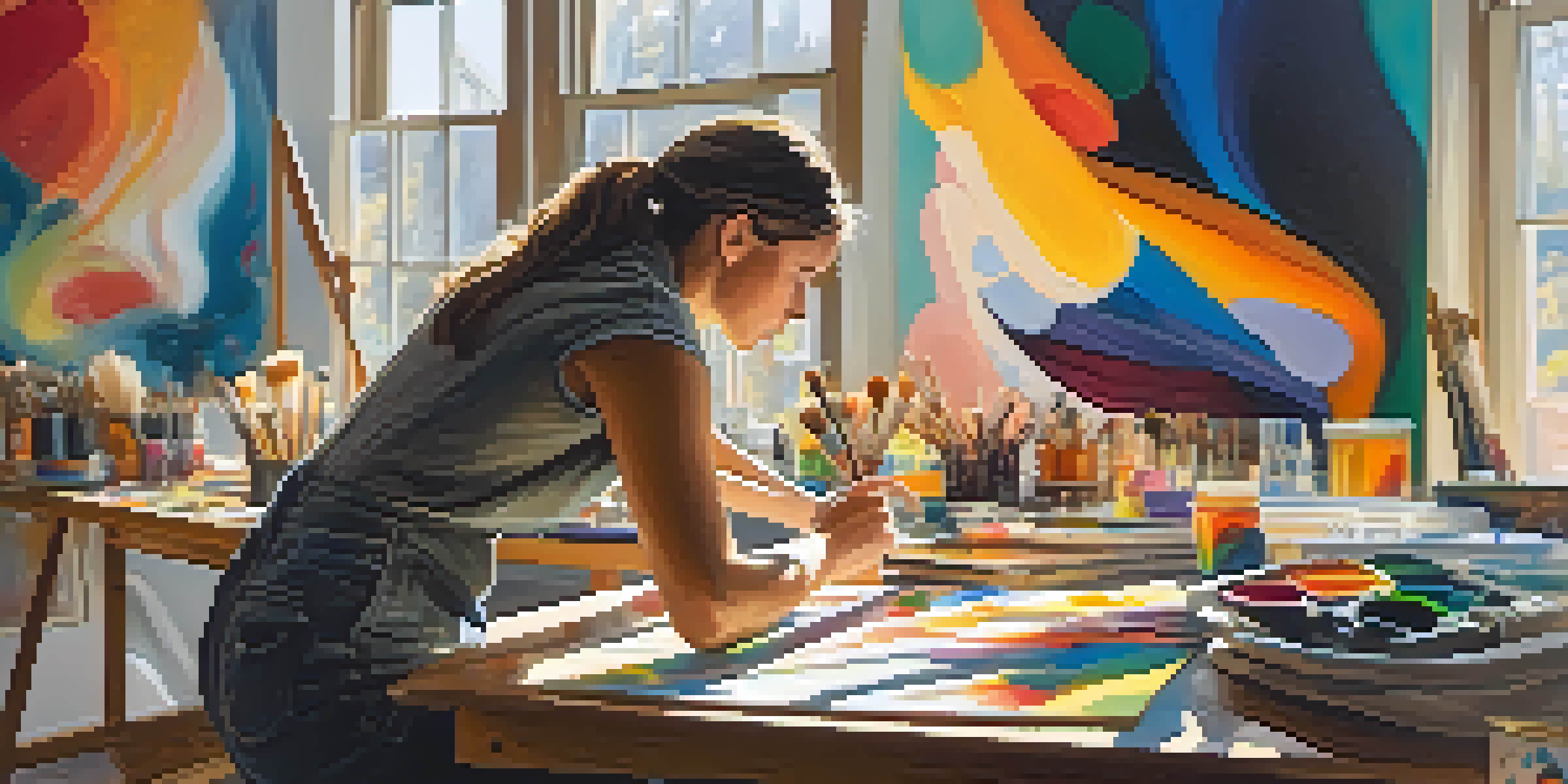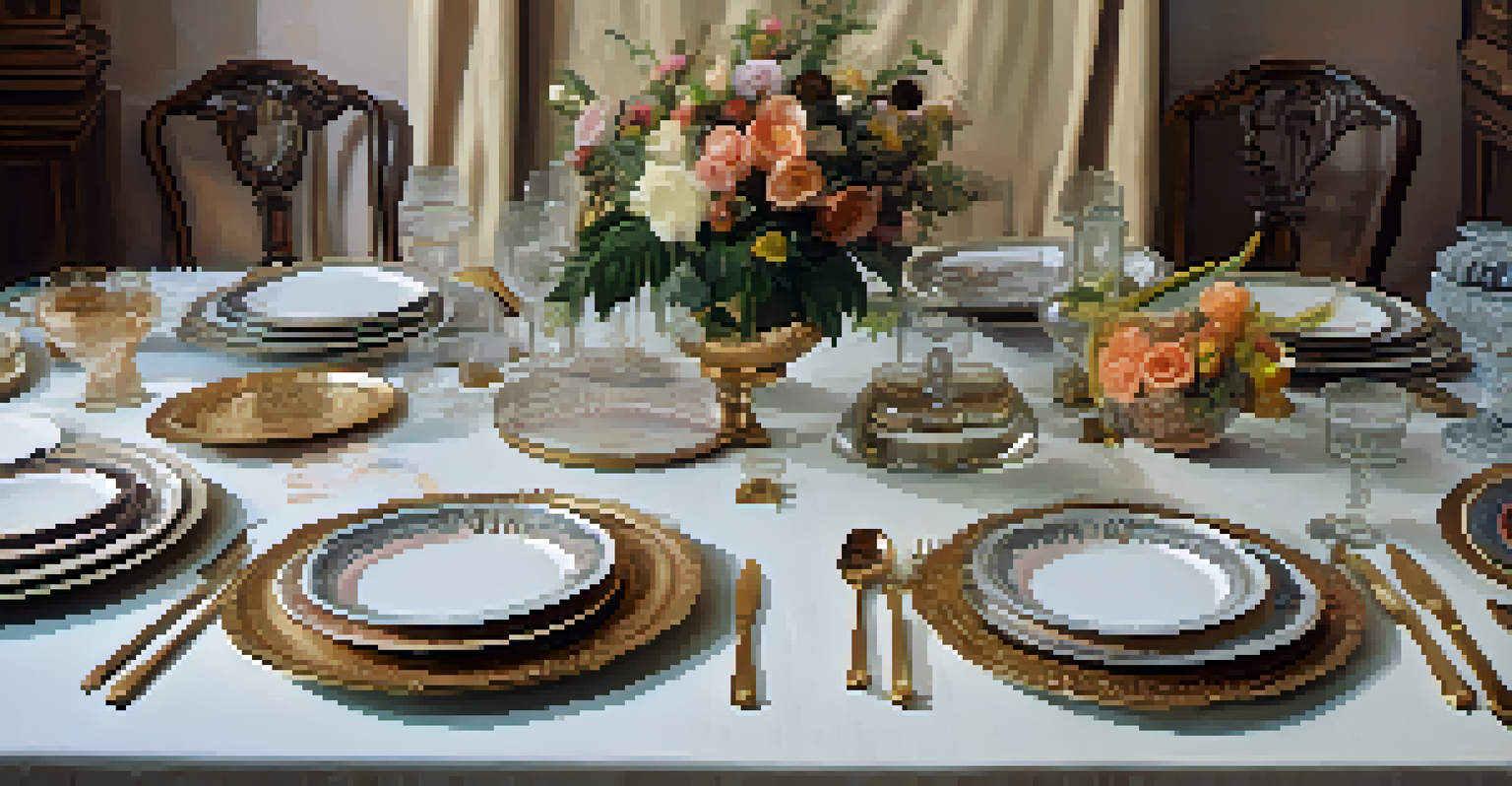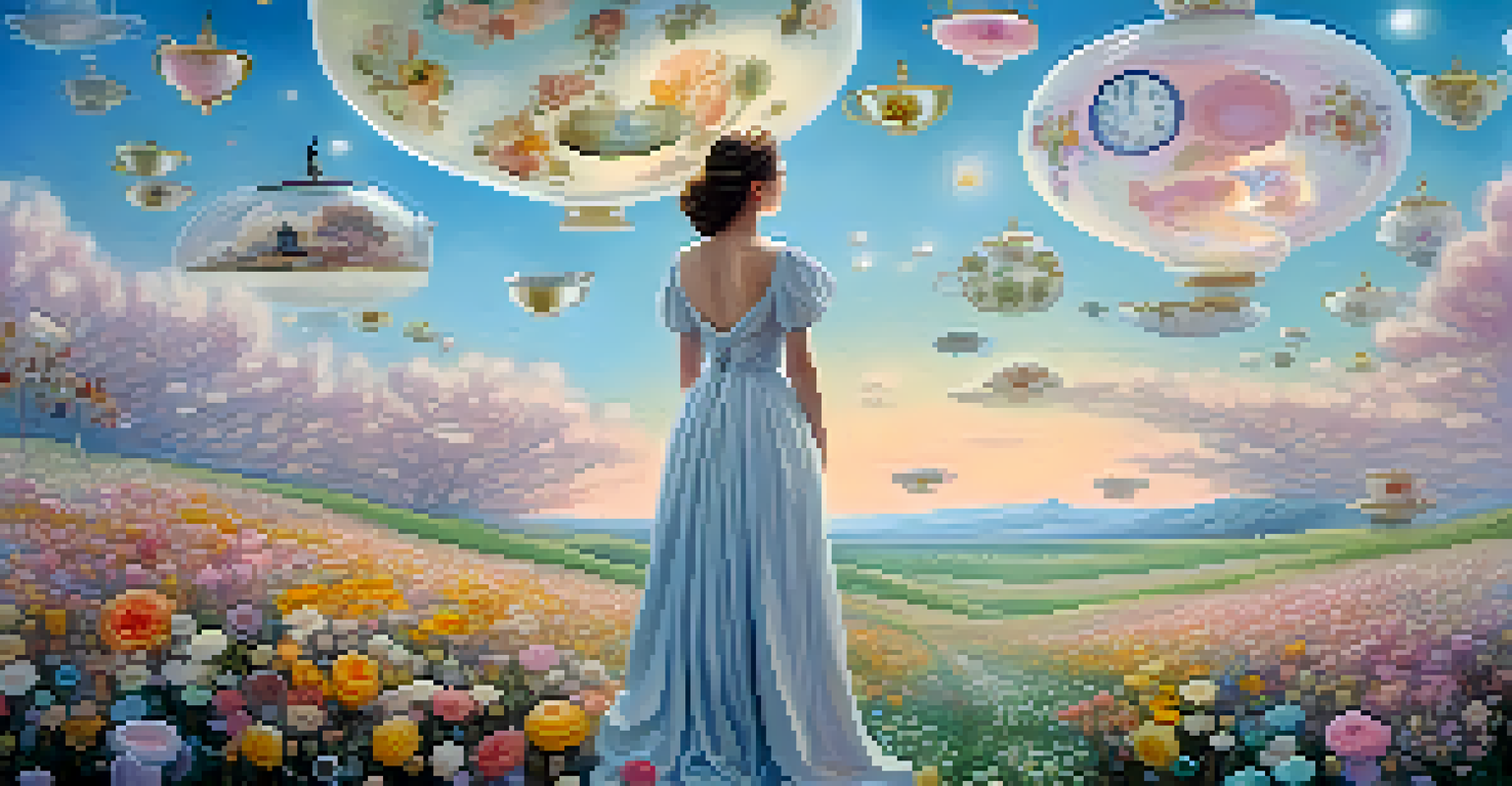The Influence of 20th Century Women Artists on Modern Art

Breaking Barriers: Women in the Early 20th Century
The early 20th century marked a turning point for women artists, as they began to break free from traditional roles. Artists like Georgia O'Keeffe and Louise Bourgeois challenged societal norms, using their art to express individuality and emotion. Their work not only gained recognition but also paved the way for future generations to pursue artistic careers. This shift was crucial, as it opened doors for women in a field dominated by men and encouraged them to explore new styles and subjects.
I paint self-portraits because I am so often alone, because I am the person I know best.
During this time, the art world witnessed a growing appreciation for diverse perspectives, thanks in part to exhibitions and movements that showcased women artists. The Armory Show in 1913, for instance, introduced American audiences to avant-garde art forms, many of which were championed by women. As these artists gained visibility, their unique voices contributed significantly to the evolving narrative of modern art. The influence of their work continues to resonate today, reminding us of the importance of inclusivity in creative realms.
Moreover, the emergence of organizations such as the Women's Art Club of New York provided vital support for women artists, allowing them to network and collaborate. This sense of community was essential in fostering a shared identity among female creators, who often faced skepticism and exclusion. By championing each other's work and expanding their artistic horizons, these women laid the groundwork for the vibrant art scene that would flourish in the decades to come.
Surrealism and Feminine Expression
The Surrealist movement of the 1920s and 30s offered a unique platform for women artists to explore themes of identity and subconscious. Pioneers like Frida Kahlo and Meret Oppenheim created works that delved into personal experiences, often incorporating elements of fantasy and dreamlike imagery. Their art challenged traditional representations of femininity, allowing them to assert their individuality and break away from male-dominated narratives.

Kahlo's self-portraits, for instance, became a powerful means of self-exploration and expression, inviting viewers into her complex inner world. By intertwining personal pain with broader cultural themes, she crafted a narrative that resonated with many, making her an enduring icon. Oppenheim's innovative approach, such as her famous 'Object' (a fur-covered teacup), also defied expectations and raised questions about gender roles and the nature of art itself.
Women Artists Redefined Art Roles
Throughout the 20th century, women artists like Georgia O'Keeffe and Frida Kahlo broke traditional barriers, reshaping the art world with their unique perspectives and emotional expressions.
This era marked a significant shift in how women's experiences were represented in art, promoting a more nuanced understanding of gender. The legacy of these surrealist artists is evident in contemporary works that continue to challenge societal norms. Their fearless exploration of the subconscious and personal identity has inspired countless artists, reflecting the ongoing journey toward self-acceptance and empowerment.
Abstract Expressionism and Female Voices
As the Abstract Expressionist movement emerged in the mid-20th century, women artists played a crucial, yet often overlooked, role in shaping its direction. Pioneers like Lee Krasner and Joan Mitchell brought their unique perspectives to the forefront, challenging the notion that abstraction was solely a male domain. Their large-scale canvases and dynamic compositions showcased their emotional depth and creative prowess, leaving an indelible mark on the movement.
Art is not what you see, but what you make others see.
Krasner, who was married to fellow artist Jackson Pollock, often faced the dual challenge of being both a female artist and a partner to a prominent male figure. Yet, she carved out her own identity within the art world, experimenting with color, form, and texture. Similarly, Mitchell's bold brushstrokes and vibrant palettes reflected her passion for nature and emotional expression, proving that women could excel in this genre.
Despite their contributions, the art historical narrative has frequently sidelined these women, overshadowed by their male counterparts. However, recent scholarship and exhibitions have begun to rectify this oversight, highlighting their essential roles in Abstract Expressionism. By reclaiming their stories, we not only celebrate their achievements but also inspire a new generation of artists to embrace their authenticity and push boundaries.
Feminist Art Movement: A New Wave of Expression
The feminist art movement of the 1970s was a groundbreaking chapter in the evolution of modern art, as women artists began to reclaim their narratives and challenge societal norms. Figures like Judy Chicago and Barbara Kruger used their art as a platform for activism, addressing issues of gender inequality and representation. Their works not only resonated with audiences but also sparked important conversations about the role of women in the art world.
Chicago's 'The Dinner Party,' a monumental installation, celebrated women's contributions throughout history, transforming a traditionally male-dominated space into one of inclusivity and recognition. Meanwhile, Kruger's text-based works employed powerful slogans and imagery to critique consumerism and patriarchy, inviting viewers to question their assumptions. This intersection of art and activism became a defining characteristic of feminist art, inspiring many to use creativity as a means of social change.
Feminist Art Sparked Social Change
The feminist art movement of the 1970s, led by figures like Judy Chicago and Barbara Kruger, utilized art as a powerful platform for activism, addressing gender inequality and representation.
The impact of the feminist art movement is still felt today, as contemporary artists continue to explore themes of identity, representation, and empowerment. By challenging the status quo, these women not only reshaped the art world but also encouraged others to find their voices. Their legacy serves as a reminder that art can be a powerful tool for advocacy, fostering a more equitable and inclusive society.
Women Artists and the Rise of Postmodernism
As postmodernism emerged in the late 20th century, women artists played a vital role in redefining artistic boundaries and questioning established norms. Artists such as Cindy Sherman and Louise Lawler challenged traditional notions of authorship and representation, using their work to critique societal expectations. Their innovative approaches not only expanded the definition of art but also highlighted the complexities of identity in contemporary culture.
Sherman's iconic 'Untitled Film Stills' series, for instance, deconstructed the female archetype by presenting herself in various roles and personas. This commentary on the male gaze and media representation resonated widely, prompting viewers to reconsider their perceptions of femininity. Similarly, Lawler's conceptual photography examined the context in which art is presented, encouraging audiences to reflect on the power dynamics at play.
The postmodern era also saw a greater diversity of voices and perspectives, as women artists of various backgrounds began to gain recognition. This shift not only diversified the art world but also fostered a richer dialogue about culture, identity, and representation. By embracing the complexities of their experiences, these artists laid the groundwork for future generations to explore new dimensions of creativity and self-expression.
Contemporary Women Artists Shaping the Future
Today, contemporary women artists continue to push boundaries and redefine what art can be. Figures like Yayoi Kusama and Kara Walker are at the forefront of this movement, using their platforms to address pressing social issues while exploring personal narratives. Kusama's immersive installations, characterized by her signature polka dots, invite viewers into her unique psychological landscape, while Walker's powerful silhouettes confront the complexities of race, gender, and history.
These artists illustrate the diversity of contemporary women's experiences, embracing a range of mediums and styles to express their creativity. From installation art to performance and digital media, they challenge traditional definitions of art and encourage audiences to engage with their work on multiple levels. Their bold statements and innovative approaches resonate with viewers, fostering conversations about identity, culture, and societal change.
Legacy Inspires Future Generations
The profound impact of 20th-century women artists continues to influence contemporary practices, emphasizing the importance of inclusivity and representation in the art world.
Moreover, the rise of social media has amplified the voices of women artists, allowing them to reach wider audiences and connect with fellow creators worldwide. This shift has led to a greater appreciation for diverse perspectives within the art community and beyond. As we celebrate the contributions of these contemporary artists, we are reminded of the ongoing journey toward inclusivity and representation in the art world.
Legacy of 20th Century Women Artists in Modern Art
The legacy of 20th-century women artists is profound, shaping the trajectory of modern art and inspiring future generations. Their courage to challenge norms and explore new territories has paved the way for a more inclusive and diverse art world. By breaking barriers and asserting their creative voices, these artists have demonstrated that art is a reflection of society, and their contributions continue to influence contemporary practices.
As we look back on their achievements, it becomes clear that the impact of these women extends far beyond their individual works. They have fostered a sense of community among artists, encouraging collaboration and support that transcends geographical and cultural boundaries. This interconnectedness has enriched the art world, allowing for a more vibrant exchange of ideas and perspectives.

Ultimately, the stories of these women remind us of the importance of representation and the need to continue advocating for equal opportunities in the arts. By celebrating their contributions, we honor their legacy and inspire a new generation of artists to embrace their unique voices. The influence of 20th-century women artists is not just a chapter in history; it is an ongoing journey toward a more equitable future for all creators.